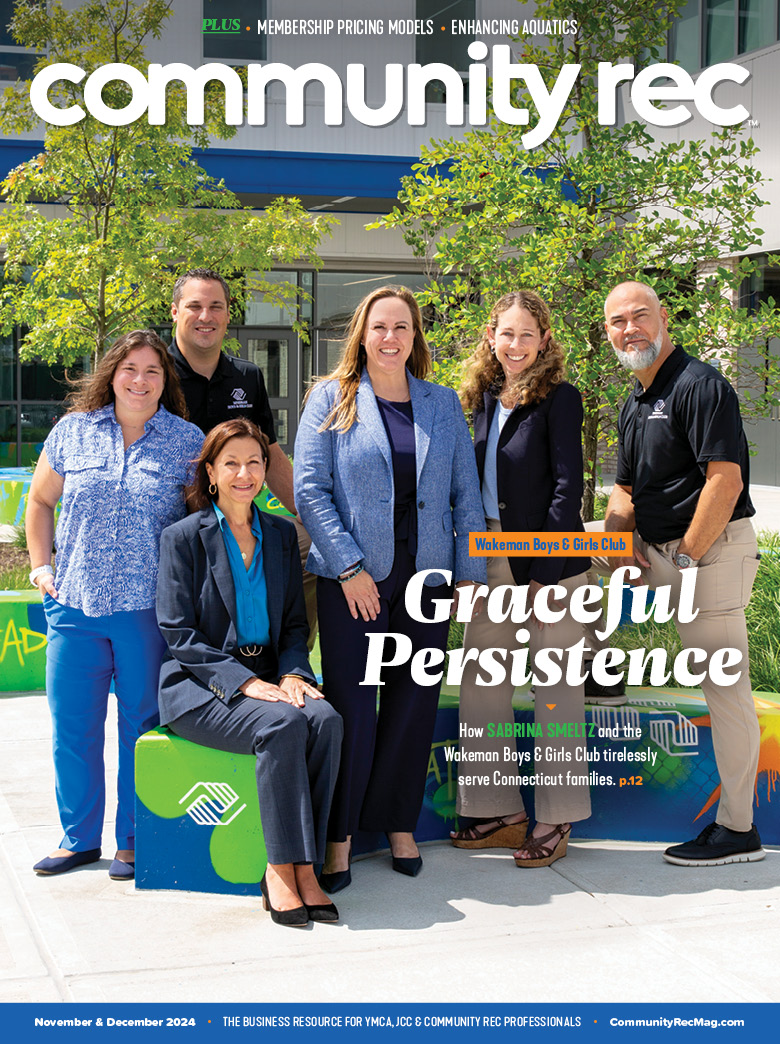Tips for successfully training and educating new employees.
The COVID-19 pandemic shutdowns allowed many people to be home and have time to rethink not only how they work, but why they work. This has led to the Great Reshuffle. Unlike anything we’ve seen in the history of work, professionals are prioritizing jobs that give them purpose.
While the Great Reshuffle may have caused your facility to lose employees, it’s likely you are also experiencing new employees joining because they want to make a difference. While it’s exciting to have fresh faces joining your team who are eager to help, it’s more important than ever that they have proper onboarding to set them up for success.
For Amelia Baker, the chief marketing officer at the YMCA of South Hampton Roads, onboarding starts with ensuring new hires know the real impact community centers make.
“The impact and community connection that happens inside fitness and rec centers is powerful,” said Baker. “Sharing how employees participate in fighting isolation for seniors, building a community of friends in group fitness classes, teaching a powerful life skill like swimming and being part of someone’s wellness journey is incredibly rewarding. Highlighting the impact the organization has on individuals and families makes it more than a job.”
Learn More: Staff Bonding Strategies from an Industry Veteran
When a new team member joins, Baker said they focus on a strategy of Welcome, Connect, Support and Invite. Staff are onboarded with a curriculum of videos and online courses as well as in-person training and support. Additionally, they’re often connected with a mentor in their first year as they navigate a new environment to get the hang of their responsibilities.
Training and educating new employees don’t stop once a member is first onboarded at the Y of South Hampton Roads.
“We provide continuing education opportunities for their particular expertise,” explained Baker. “For example, group fitness and personal training certifications are scheduled throughout the year, in-service sessions and team retreats are organized, and we provide management training tracks for staff hoping to stay with the Y to build a lifelong career.”
Just like any task, onboarding comes with its own struggles and challenges. Baker said the majority of these challenges arise when they are in urgent or dire need for staff — a situation many facilities can relate to after facing two years of a pandemic and a national staffing shortage — and the training process may need to be sped up. “It’s definitely a challenge to balance the right timeline that allows the staff to receive proper training support within the optimal time frame versus fulfilling our member service and consumer needs at the most optimal level,” she explained.
Learn More: Tackling the Youth Sports Staff Retention Issue
While there are challenges that come with onboarding staff, the benefits far outweigh the obstacles. Despite facing the Great Reshuffle, you will find the people who truly want to make an impact and help others are those who actively seek out your organization and crave more knowledge and training. For Baker, simply offering a sense of belonging and team camaraderie will create an infectious culture that will keep your staff around.
“It’s human nature to desire being part of something, especially something bigger than yourself,” explained Baker. “Encouraging the team to take opportunities to see and understand how they’re impacting their friends, neighbors and community by working at the Y helps to understand the mission of the organization and how critical it is for the community.”
Extra: Onboarding Best Practices by SnackNation
- Send out a new hire announcement introducing them to the team.
- Schedule “meet and greets” with collaborators and teams across the company.
- Schedule “meet and greets” with company leaders or top performers so new hires can hear their stories and learn from their experiences.
- Establish a list of regular tasks, goals for the first year and key performance indicators.
- Provide information about the growth potential for their specific position or upward mobility at the company in general. If someone was promoted from the new hire’s position, have that person share some insight about their experience.
- Complete one-week, 30-day and 60-day pulse check-ins to find out how new hires feel overall and find out if they have the specific support, resources and equipment they need to work efficiently and effectively.










